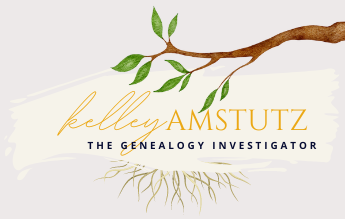MAY 2024 - Let's Learn More About the Origins of Mother's Day
Happy Mother’s Day!
Today we celebrate the Moms, Grandmothers, and those who play a special role in our lives. Thank you for all you do and know that we love you so much.
But, I want to ask a question…
Do YOU Know Where Mother’s Day Originated From?
Well, let’s dig into the #history behind MOTHER’S DAY.
The official Mother's Day holiday came about in the 1900s as a result of the efforts of ANNA JARVIS, daughter of Ann Reeves Jarvis.
Following her mother's death in 1905, Anna Jarvis held Mother's Day as a way to honor the sacrifices that mothers make for their children.
Who is Ann Maria Reeves Jarvis?
Ann Maria Reeves - Jarvis, circa 1930
Ann Maria Reeves Jarvis was born on the 30th of September 1832 and lived until the 9th of May 1905. She was a social activist and community organizer during the Civil War era and is the person behind the recognition of Mother’s Day. She was a founder of the Mother’s Day Movements, and her daughter, Anna Marie Jarvis (1864-1948), is the FOUNDER of the Mother’s Day holiday in the United States.
[from Wikipedia]
But, WHO was Ann Maria Reeves - Jarvis?
Ann Maria Reeves was born in Culpeper, Virginia in 1832 and was the daughter of Josiah Washington Reeves and Nancy Kemper. Her father was a Methodist minister, who moved his family to Philippi, Barbour County, (West) Virginia , when he was transferred to a church in this town.
Ann would marry Granville Jarvis in 1850, who was the son of a Baptist minister. Granville went on to become a successful merchant in the nearby town of Taylor County.
In 1852, the couple moved to Webster, where Granville went on to establish a mercantile business in that town.
The Jarvis family experiences a lot of tragedy and loss in the mid-1800s, like most during this time. Ann had between eleven and thirteen children over the course of seventeen years. Of these children, only four (4) survived to adulthood. The others passed away from the diseases prevalent during these times. This is the strength from these losses that Ann was inspired to take action to help her community fight these childhood diseases and look at the unsanitary conditions.
Ann saw the needs within her community and worked hard to find ways to fix them. In 1858, when she was pregnant with her sixth child, she started working on the Mothers’ Day Work Clubs in the towns of Grafton, Pruntytown, Philippi, Fetterman, and Webster to try to take action and improve the health of those children and residents, alike. She even joined a public health movement in the U.S.
Ann’s clubs worked to provide assistance and education to families to reduce disease and infant mortality. The clubs raised money to buy medicine and to hire women to work in families where the mother suffered from tuberculosis or other health issues.
Ann’s groups even came up with programs to inspect milk way before state requirements were put in place.
Ann’s brother, James Reeves, was a physician and he often advised his sister, as he was known for working in the typhoid fever epidemics in northwestern Virginia during these times.
But, Ann’s work went even further when the Civil War (1861-1865) divided the north and south in western Virginia. In 1863, the western part of Virginia broke away and formed the new state of West Virginia and was loyal to the Union. Western Virginia would go on to become the location of some of the first conflicts of the Civil War.
Ann’s Mothers’ Day Work Club altered their mission in order to meet the changing demands that were brought on by the war. Ann urged the clubs to declare neutrality and to provide aid to both Confederate and Union soldiers. She remained neutral by refusing to support a proposed division of the Methodist Church into a northern and southern branch. It is said she even offered a lone pray for Thornsbury Bailey Brown, who was the first Union soldier killed by a Confederate in the area, even though others refused to do so.
It was by her guidance that the clubs fed and clothed soldiers from BOTH sides who were stationed in the surrounding area. When typhoid fever and measles broke out into the camps, Ann and her club members nursed the suffering soldiers from both sides back to health at the requests of the commanders.
Her efforts to keep the community together went on even after the Civil War ended. Public Officials sought ways to eliminate post-war strife and called Ann Jarvis for HELP. She and her fellow club members planned a “Mothers Friendship Day” for soldiers from both sides and their families at the Taylor County Courthouse in Pruntytown to help the healing process. Even with threats of violence, Ann staged the event in 1868 and shared a message of unity and reconciliation with the veterans.
In 1864, the Jarvis family relocated to Grafton so Granville’s business venture as an innkeeper and land speculator could have financial backing. Ann continued her social activist work. She taught Sunday School and was very involved in the Methodist Church throughout her life. In Grafton, Ann was involved in the Andrews Methodist Episcopal Church’s construction. She even served as superintendent of the Primary Sunday School Department at the Church for twenty-five years!
Ann was also a popular speaker and lectured on subjects that went from religion to public health.
Throughout her life, she lived to help and honor mothers.
On the first anniversary of Ann’s death, her daughter Anna, met with friends and announced plans for a memorial service to remember her mother, scheduled for the following year. May of 1907 a private service was held in Ann Maria Reeves-Jarvis’ honor.
In 1908, Anna organized the first OFFICIAL OBSERVANCE of Mother’s Day, coming near the anniversary of her mother’s death.
Andrews Methodist Church held the FIRST public service on the morning on May 10, 1908.
Anna was not able to attend the service, but in her absence she sent in a donation of 500 white carnations for all of those in attendance.
In the afternoon, 15,000 people attended another service that Anna organized in Philadelphia, held at the Wanamaker Store Auditorium.
In the years that have followed those first ceremonies, Anna’s new holiday gained recognition in many states and spread to a number of foreign countries. Anna also embarked on a mission to make Mother’s Day an officially recognized holiday in the United States, which was succeeded in 1914, when President Woodrow Wilson signed a congressional resolution officially making the second SUNDAY in May the NATIONAL MOTHER’S DAY and calling for Americans to recognize it by displaying the flag!
Ann and Granville Jarvis DAUGHTER - Anna Maria Jarvis (1864-1948)
Ann Maria Reeves Jarvis remained in Grafton until after the death of her husband in 1902, then she moved to Philadelphia to live near her sons and two daughters. Anna, her daughter, become her caretaker as her health began to decline due to heart issues. Ann passed away in Philadelphia on the 8th of May 1905, surrounded by her four surviving children. She was buried in West Laurel Hill Cemetery, in Philadelphia, but her daughter ensured her legacy and hard work were recognized all these years later… and for future generations to come.
Citation:
West Virginia State Archives, "Anna Maria Reeves Jarvis", West Virginia Archives and History.
West Virginia State Archives, Anna Maria Reeves Jarvis,” West Virginia Archives and History [1] Archived 2009-09-21 at the Wayback Machine, Marie Tyler-McGraw, Mother's Day Revisited: "But After All Was She Not a Masterpiece as a Mother and a Gentlewoman…" Goldenseal (Spring 1999): 10–15.
Check out ALL my Programs - Click HERE
***
Check out ALL my Programs - Click HERE ***
I have a SECRET to share! I added the Brick Wall Buster Cards to my Genealogy Toolbox and it has CHANGED the way I do research!
The cards have special prompts to help you stay on track while researching those ancestors that help you break through brick walls and avoid those pesky rabbit holes, altogether!
It’s like making a MURDER MAP that Detectives use in their true crime cases.
And, because I believe in this product SO MUCH, I have a SPECIAL CODE for all my followers to save you some $$ and add Brick Wall Buster Cards to your TOOLBOX, now!
CLICK the LINK below — add your KIT to your cart and enter:
at checkout to SAVE!










The History of Mother’s Day
Anna Maria Jarvis (May 1, 1864 – November 24, 1948) was the founder of Mother's Day in the United States. Her mother had frequently expressed a desire to establish such a holiday, and after her mother's death, Jarvis led the movement for the commemoration.